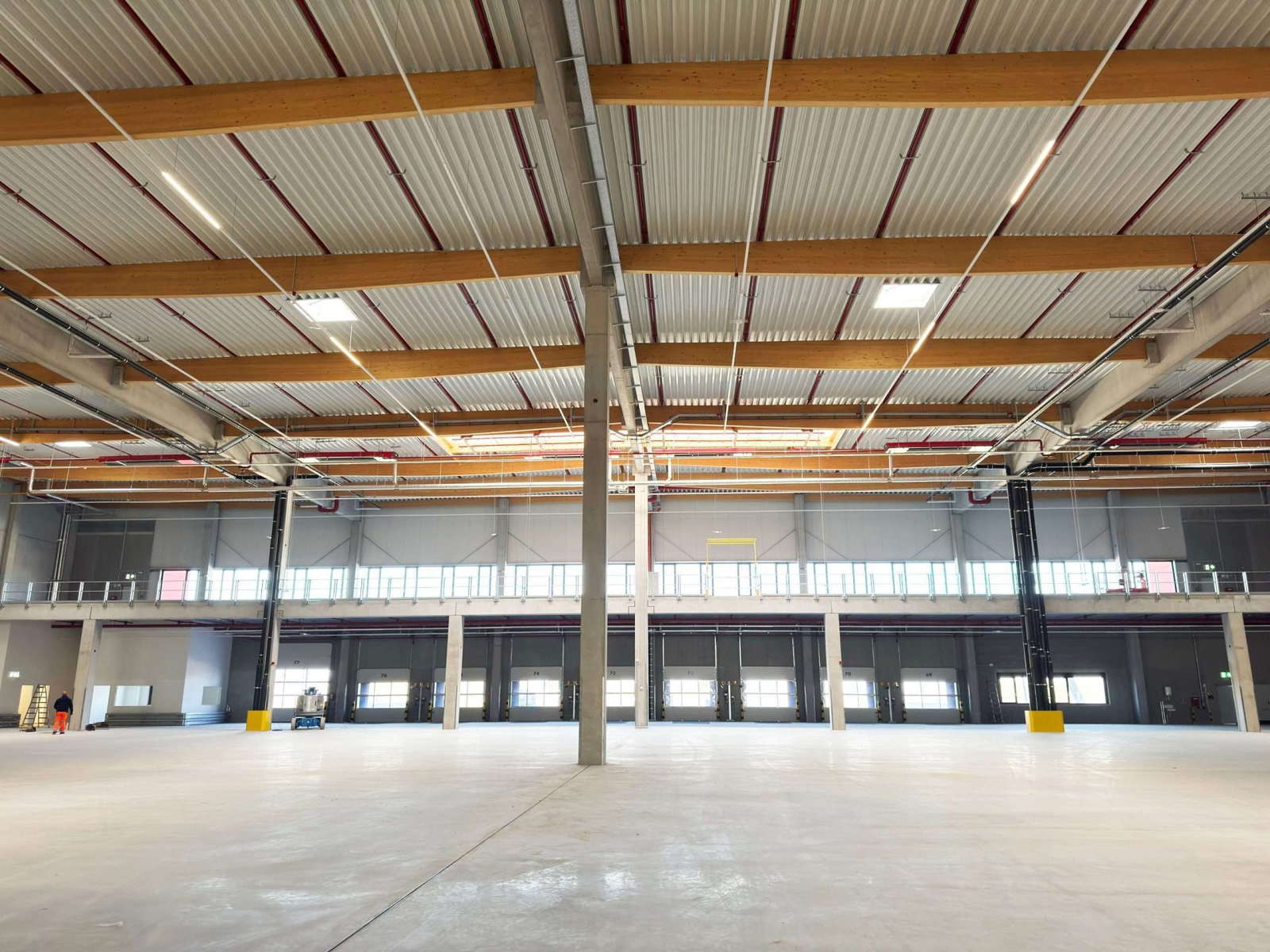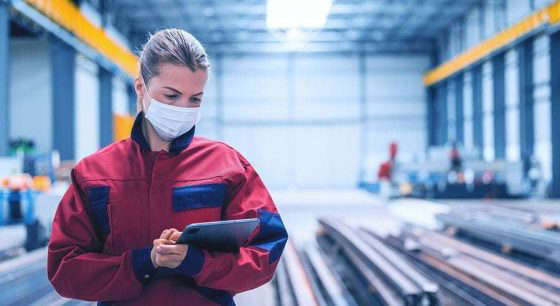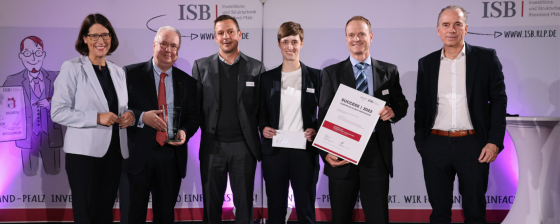Heating halls: 6 heating systems at a glance

Getting started - the difference between centralized and decentralized systems
Systems for heating halls are divided into centralized and decentralized systems. Centralized systems require a separate boiler room in which heat is generated in so-called heat generators. This heat is then conducted to the heating devices - known as heat exchangers - where it heats the heating medium inside, which in turn provides heat for heating. This process is also known as "indirect heating". However, some of the heat is already lost during transportation.
Decentralized systems, on the other hand, use the primary energy directly in the usable space or the heating device itself, which only generates the heat where the employees need it. They are, so to speak, heat generators and heat exchangers in one device, do not require a separate boiler room and can be used more flexibly and quickly. In addition, there are no heat or energy losses due to storage and transport lines.
Hot air heating for halls: You have these options
The basic principle behind warm air heating systems is very simple and quickly explained: a fan directs warm air into a room and heats it in this way. If you want to use warm air to heat halls, you have two options:
Decentralized heat supply via hot air generator
With direct-fired hot air heaters, the burner generates the heat directly in a decentralized manner. Air drawn in on the secondary side is then heated by means of a heat exchanger and blown into the hall.
When heating halls with the help of warm air heaters, it is possible to use room air-dependent and room air-independent operating modes. This means that the appliance either draws in fresh air or heats the air from the hall itself. The latter is particularly practical. As warm air is known to rise upwards (convection), the air in the working or floor area tends to be colder. Room air-dependent warm air heaters feed precisely this cool air back into the warm air generation system and thus ensure that it is replenished. Room air-independent appliances, on the other hand, often also use the heat from the flue gas duct to heat the air supplied from outside.
Central heating of halls with an air heater
Indirectly heated air heaters, also known as air heaters, do not heat the air themselves. Instead, a separate boiler or central heating system is connected here, which heats the heat exchanger externally. The air heater also draws in air and then passes it through the heat exchanger, which heats it. The warm air can then be blown into the hall or distributed via air ducts. If you want to use an air heater to heat halls, you should again consider convection and plan for warm air recirculation or ceiling fans to provide at least partial relief.
Panel heating systems for heating halls
You can install panel heating in the floor, ceiling or walls. Underfloor heating is probably the most widespread, but the system behind it is basically the same. For underfloor heating, thin pipes are laid across the entire floor in a snake-like pattern during the construction of the hall. The underfloor heating can also be installed subsequently in an additional screed layer. Note: In practice, this option is rather unrealistic, as the entire hall, including machinery, would have to be cleared out and would not be available for use for weeks.
To heat halls, an externally heated heating medium (e.g. water) is fed through these pipes. The heat generated in this way can be felt directly in the floor and is only slowly released into the room, but remains there for a while even if the heating is switched off briefly.
Please note that hot water systems are very slow and sometimes require days to heat up. They cannot be switched on or off at short notice and generally have to remain in operation 24/7 for the entire heating period. You should also be aware that if shelves or machines are anchored too low, this can damage the heating hoses.
Not to be forgotten: The infrared radiant heaters
When heating halls via radiant heat, a distinction is made between light and dark radiators. There are also radiant ceiling panels.
Radiant ceiling panels
Also known as a "hot water radiant ceiling panel", this system involves pipes being welded onto a metal plate directly under the ceiling. Similar to underfloor heating, hot water heated by an external heat generator flows through these pipes, transferring the heat to the entire structure. A radiant panel then directs the heat downwards into the room, where it raises the surface temperatures of all surfaces.
You should install an insulating layer between the ceiling and the radiant ceiling panel to reduce heat loss upwards. If you want to use radiant ceiling panels to heat halls, you should also plan for a large heating surface of approx. 15-20 % of the ceiling surface. Because water boils at a temperature of 100 °C, the temperature level of this heating system - similar to underfloor heating - must be relatively low. This also applies to the infrared efficiency of radiant ceiling panels. Please bear this in mind when designing your heating system.
Infrared dark radiators for efficient heating of halls
Dark radiator, auch als Schwarzstrahler bekannt, sind eine Variante der Infrarot-Strahlungsheizungen. Die Beheizung von Hallen erfolgt hier dezentral durch einzelne Geräteeinheiten, die durch einen Brenner eine lange Flamme in einem Strahlrohr erzeugen. Entstehende Abgase werden geschlossen nach außen geführt und können mit der Brennwerttechnik zur Restwärmenutzung verwendet werden. In der Vergangenheit handelte es sich beim Energieträger um Erd- oder Flüssiggas. Die neue Fair.AIdH* Infrarottechnologie oder auch Multi-Energie-IR-Hallenheizung können heute energieflexibel erneuerbare Energien wie Strom oder Biogas und Wasserstoff nutzen. Durch ihre Fähigkeit, variabel die Energieträger zu nutzen, die gerade besonders kostengünstig sind, bieten sie einen skalierbaren, gesetzeskonformen und sicheren Weg in die CO₂-freie Zeit.

Das Prinzip ist in Hallen sehr effektiv: Reflektoren am Strahlungsrohr lenken die entstandene Wärme in Form von Infrarot-Strahlung in die zu beheizenden Bereiche. Dort sorgt diese erst für Wärme, wenn sie auf die Raumfassung und Oberflächen von Objekten oder Personen trifft – ähnlich wie die Sonne. Der entscheidende Vorteil von Strahlungsheizungen dieser Art ist daher, dass keine warme Luft physikalisch bedingt unter die Decke steigt und zurückgeleitet werden muss. Dieses physikalische Wärmeprinzip und die Möglichkeit, dass Sie Infrarot-Dunkelstrahler auch kurzfristig ein- oder ausschalten und auch einzelne Heizzonen unterschiedlich regeln können, sorgt für einen enormen Effizienzvorsprung dieser Systeme. In der Praxis sind Energieeinsparungen von 50 bis 70 Prozent die Regel.
Bright radiators: heat generation via ceramic
Bright spotlight work in a similar way to dark radiators. A gas-air mixture is burned on ceramic plates, generating heat and emitting infrared radiation. Reflectors direct the rays into the working area. However, the fundamental difference lies in the combustion process. In bright radiators, this takes place openly - and so the exhaust gases initially remain in the room. Indirect removal of the exhaust gases is therefore necessary. Anyone relying on radiant heating systems for heating halls must therefore ensure adequate ventilation.
What is particularly worthwhile for heating halls?
Which heating system is the right choice for you depends entirely on your usage profile and your economic requirements. For room heights of 4 meters or more, however, infrared dark radiators are recommended here, as they are particularly well designed for the physical characteristics of halls and are characterized by comparatively low investment costs with high efficiency, flexibility and operational reliability. Let's talk about this in a personal meeting - or find out more with our Configurator to find out which heating system is best suited to your property!
-
Anyone who operates one of the approximately 360,000 hall buildings that have been built in Germany since the 1960s has certainly already got cold feet this winter. It is quite likely that the heating systems in these halls are over 20 years old and are likely to cause regular malfunctions or even production stoppages. Not to mention the high heating costs or the trouble with employees and the works council.
-
According to the IMD Competiveness Ranking 2024[1], our once leading industrial nation has slipped from 6th to 24th place in just ten years. 45 percent of industrial companies with high electricity costs are planning or implementing plans to reduce their production or relocate it abroad. And the trend is rising[2]. Increasing bureaucratic costs and the extremely high level of energy prices in our country are causing many companies to [...]
-
While Germany is discussing the energy transition, KÜBLER GmbH from Ludwigshafen has already delivered. FUTURA is the name of the latest invention from the experts for hall heating systems - and it works regardless of the energy source: the infrared heating system for halls uses hydrogen, electricity, gas or a mix of these. It can process green and fossil fuels highly efficiently, thus building a bridge to the carbon-free era. This is one of the reasons why the Investitions- und Strukturbank Rheinland-Pfalz (ISB) and the Ministry of Economic Affairs, Transport, Agriculture and Viticulture awarded KÜBLER the special prize "Innovative Technologies for Climate Protection" at the SUCCESS Innovation Award on Tuesday evening.
-
The horrendous rise in energy prices, the fear of Putin stopping supplies, the demand for renewable energies to combat climate change - all of this is currently causing a great deal of uncertainty. Is it still worth investing in gas-powered industrial heating systems? The answer to this question is important. Because it determines how quickly trade and industry will make their contribution to the energy transition. And how well it will be possible to meet the future requirement of climate protection in an economically viable way.





